Estimated reading time: 10 minutes.
May/2018 – The EF 100mm f/2.8 Macro USM is a short-telephoto large aperture prime designed for 1:1 ratio macro capabilities; made to render real-life sized objects on the image plane. Introduced back in 2000 with over 18 years of market, it’s still one of the most important lens on Canon EF lineup because of it’s not too long, not too short; nice to work with product photography, insects, portraits, landscapes and even sports; also one of the most accessible primes, perfect to suit both professionals and amateurs kits. Not without it’s own competition on the EF lineup, Canon offers an extensive selection of macro lenses like the specialty MP-E 65mm f/2.8 1-5X; the wide-angle EF-S 35mm f/2.8 IS STM; and the identical L series; plus three new tilt-shift models released last year. But how does the 100mm f/2.8 handles almost two decades after its design? Let’s find out!
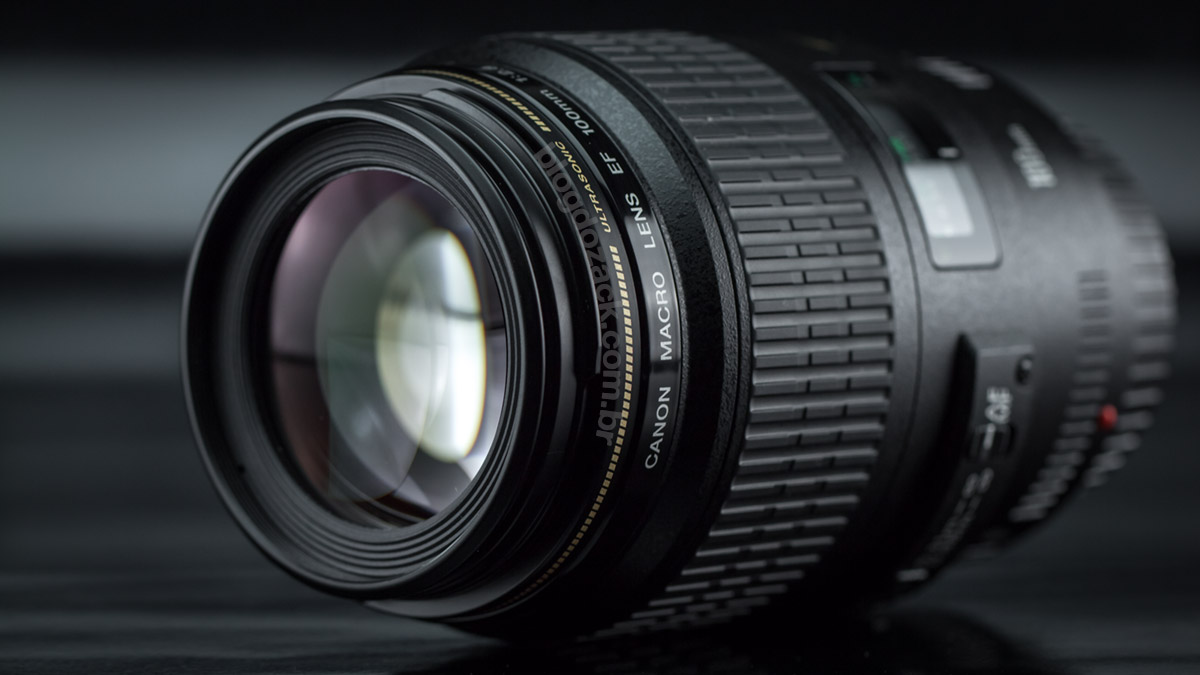
At 7.9 x 11.9cm of 600g of mostly plastic, rubbers and glass, the first thing we notice on the EF 100mm f/2.8 Macro USM is its “old school” design; we can’t deny its 18-years on the EF lineup. A “problem” plaguing some very important lenses on Canon’s lineup, this design uses different steps to separate both handling and adjustments zones, distinct from newer streamlined lenses that are more comfortable to use; despite being very robust and easy to use. What’s important is its solidness and lightness paired with a scratch-resistant external barrel and all-internal focusing mechanism, clearly meant for the professional market just like the identical L series; both work well for amateurs as well. So the simpler 100mm f/2.8 USM is an easy recommendation: opt for the more expensive L version if you must use its built-in stabilizer (nice for video recording) and weather resistance; or make peace with the cheaper alternative, that works just as well.

In your hands the ergonomics are pleasing for those born with longer fingers, once everything feels robust. It didn’t have to be this thick: the first and last optical elements are certainly smaller than the overall outer barrel, and it’s clear Canon’s intention at making it larger to fit our hands, balanced with the camera. At the rear a fixed 5.5cm area houses the top distance window and side control panel, together with an optional tripod collar model B(B), all within fingers reach. At the center barrel the manual focusing ring is generous at about 3.6cm and nearly completely rubberized, smooth to the touch and offering the excellent full-time manual operation: at any moment one can adjust the ring even with the auto-focus motor set to AF, faster to precisely focus on any subject. That was an update over the 1991 non-USM EF 100mm f/2.8 Macro and still a highlight; Sigma’s 17-70Macro and 18-300Macro doesn’t take this control as seriously. Also this ring is very precise at 150º with 120º from 31cm (MFD) to 1m; and the other 30º to infinity; and fast to use. It’s Canon’s always perfect ergonomics, though with the photographer’s in mind.
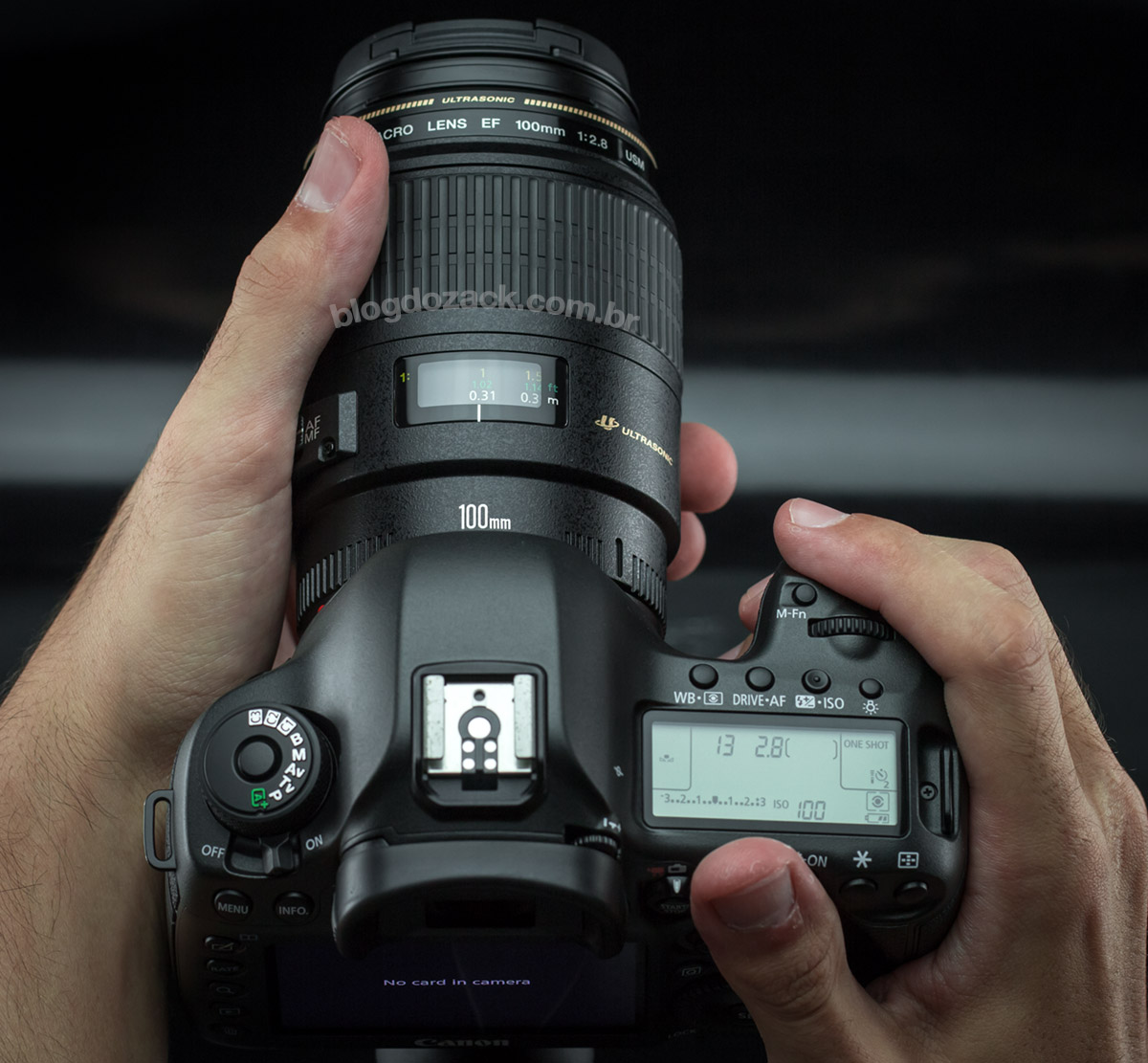
Inside Canon uses a top-of-the-line ring-type USM auto-focusing motor that is high speed, silent and precise, all with a floating-elements design. Once again it’s surprising to see Canon’s technology from two decades ago: the all-internal focusing system justify this 100mm f/2.8 larger barrel (the 100mm f/2, for example, is much shorter), and the groups move in opposite directions, made to guarantee high optical performance from infinity to MFD. A magnetic ring creates energy to push the groups front and back over a track, making the image look bigger (thus magnifying it) on the image plane. Such design minimizes optical imperfections from the frame’s center to the edges, and the overall speed is good; even possible to shoot sports. Here demonstrated with the 2015 EOS 5DS (15 years between camera and lens), the auto focus was near flawless.

In single mode its precision is good using the DSLR’s viewfinder (phase-detection module under the mirror) and the Live View (using contrast detection on the EOS 5DS); and practically every shot came in focus during this review. The ultrasonic motor has plenty of torque to drive the focusing groups at high speed, making it easy to photograph insects, birds and most living things. But there’s a catch: as the macro photography distance moves the focusing plane far away from infinity, sometimes the camera won’t attempt to drive the lens (depending on the camera’s setting) if the focusing point is way out-of-focus. That’s why the full-time manual focus ring is useful; at least you can set the lens to the right direction. And in SERVO continuous mode shooting Avenida Paulista’s cyclists I got mixed results: about 50% of the shots are in focus, a low accuracy ratio for this camera (the L series shows the same behavior). Despite the fast AF motor and even a limiter offering shorter focusing distances (complete from 0.31m; or from 0.48m to infinity), the SERVO mode is less than adequate on these lenses. So use your EF 100m Macro for what it’s designed: close-ups.

“Cyclist” with the EOS 5DS + EF 100mm f/2.8 Macro USM at f/2.8 1/1000 ISO125.

Crop 100%, back focus and front focus, with a low accuracy ration during SERVO mode. (click for larger)

Without a built-in stabilizer; LEDs; magnification or zoom adjustments; at the front the EF 100mm f/2.8 Macro USM accepts smaller ø58mm filters that are not expensive to purchase. They fix on a plastic thread over the first optical element that fits inside the optional ET-67 lens hood (not included); and the flash-ring thread (to fix the MT-24EX). At the rear the metal mount is fixed with four Phillips screws, very solid for years of photographs, paired with the solid plastic barrel, more resistant to impact. The last glass piece is part of the focusing group and mobile, not compatible with extenders, also not “sealing” the lens against dust; carefully unmount it from the camera not to get dirt inside the optics. Overall the EF 100mm f/2.8 Macro USM aged well on Canon’s lineup passing the years with minimum updates (the AF switches are now recessed; they weren’t at launch), and I’ve never seen complains from photographers who use it daily. But are its images compatible with newer digital cameras, demanding picture-perfect files? Let’s mount it on our 50MP EOS 5DS and see if we can live with a 18-years old lens from Canon’s lineup.

“Anthurium” at f/2.8 1/8 ISO50; all photos with the Canon EOS 5DS.
With a simplified 12 elements in 8 groups optical formula, non-special glass pieces like low-dispersion or aspherical; or specialty chemical treatments like SWC or Air-Sphere; what Canon has (humorously) being delivering for the past two decades is exemplary; one of the best lens we’ve ever seen on blog do zack despite its age and price point. The image quality is almost insane: side-by-side with the L-series there’s little to gain from the more expensive lens, and its resolution is spectacular as soon as f/2.8; even on the 50MP 5DS. The chromatic aberrations control is virtually the same on the newer L lens, not seen on even Nikon’s more expensive Micro-Nikkor 105mm f/2.8G. It’s a peace of mind for photographers whom depend on this focal length to work, and doesn’t really need the L-series stabilizer; your photos will be same as more expensive kit.
Even wide open the EF 100mm f/2.8 Macro USM performance is awesome. While I was expecting at least some loss of contrast given the lack of novelty optical treatments; some loss of corner sharpness due the lack of spherical glass; or strong chromatic aberrations (more about it next); NOTHING HAPPENS at f/2.8. Here shooting a nightly landscape merely to push the optics to its limits at the widest aperture (non-sense given the depth of field), it’s already hard to see any optical flaws from the 100mm Macro; typical of f/2.8 primes (it’s not extreme as a f/1.8). Although the file is not perfect, with some sagittal coma flare and a strong vignetting at this maximum aperture, that’s the same performance as other top-of-the-line lenses. Here simply showcased with flowers at the studio, the perceived resolution almost surpasses the 5DS sensor’s capability. So these files can be printed on larger formats as never before, also never seen at this price point.

Crop 100%, detail on the upper left corner, near perfect at the widest aperture.
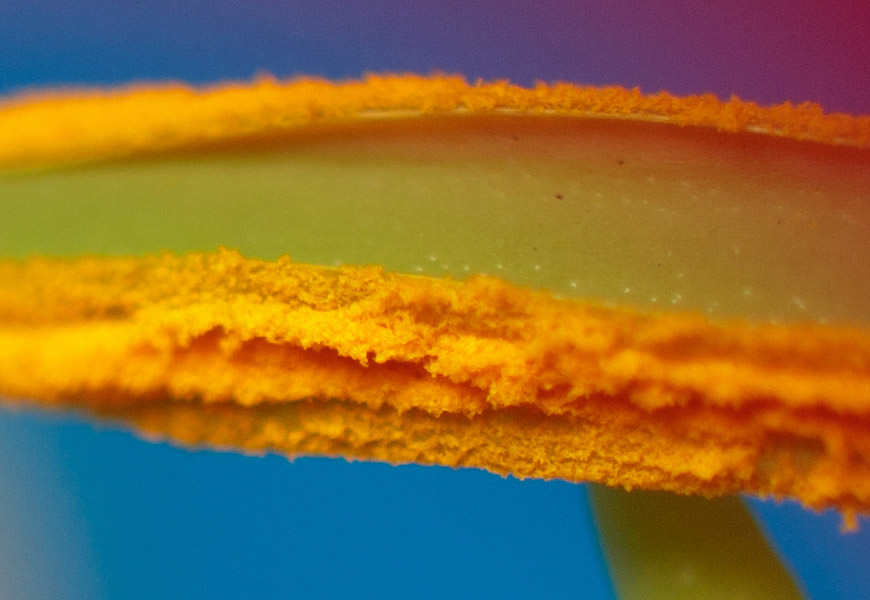
Crop 100%, low depth of field, but high performance nonetheless.
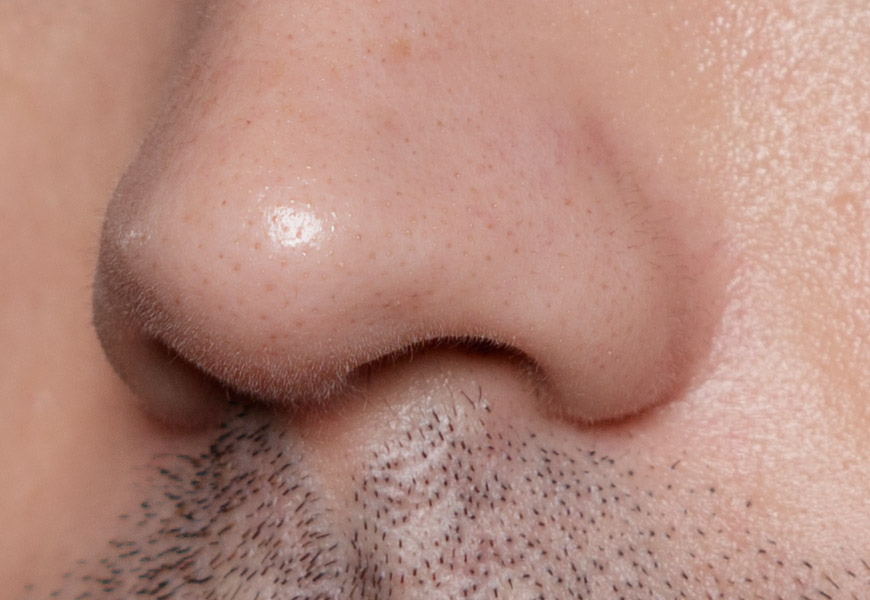
Crop 100%, the EOS 5DS impressive resolving power.
Stopping down solves minimum optical flaws like most modern primes, ready even for future digital sensors. As soon as f/4 and f/5.6 we reach the 5DS peak resolution – it’s limited at f/6.3 due to diffraction – perfect for high precision shots of art collections; science work; or simple portraits. At these values the chromatic aberrations are optically fixed on the still shallow depth-of-field, also recommended for some types of product photography. Bigger challenges arise when working with macrophotography: advanced staking techniques are needed to blend separate image planes for all-in-focus images, making it even harder to work with these higher pixel density cameras; a problem solved maybe by the newer and exotic tilt-shit TS-E Macro lenses; all costing almost 4x this 100mm vintage. So this lens is as good as it gets for the entry-level photographer.
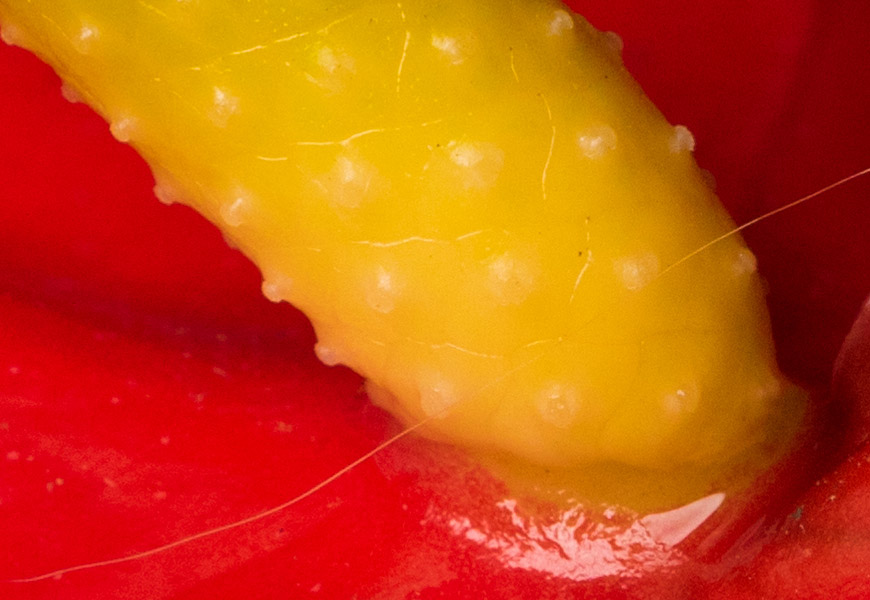
Crop 100%, impeccable details on the image plane.
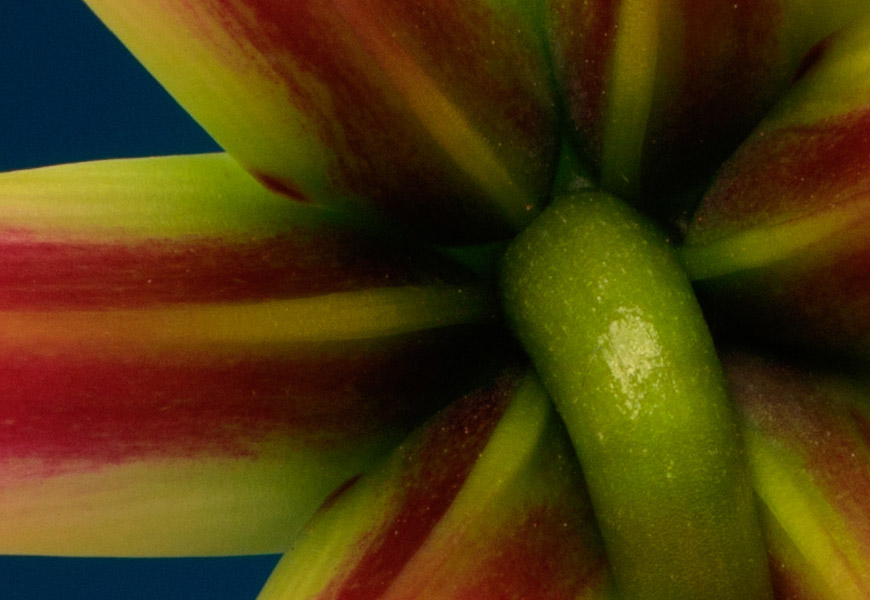
Crop 100%, crossing the EOS’s 5DS diffraction limits.
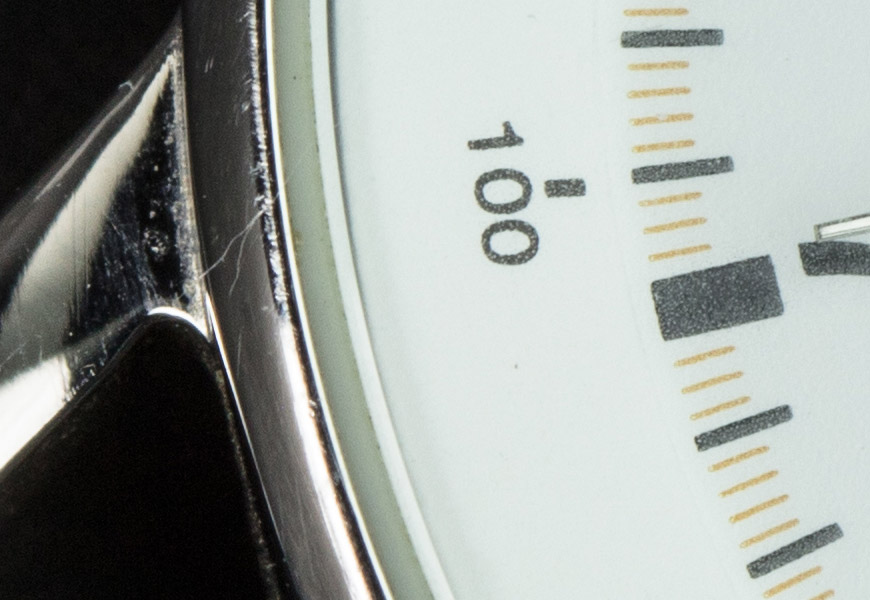
Crop 100%, hugely sharp files ready for heavy post-processing.
The chromatic aberrations are also a surprise on this formula given its age, price and format; virtually identical to the L series. Wide open the axial chromatic aberration is visible on high contrast edges outside of the focal plane, noticed mostly on industrial shots, with man made objects. Be it on printed lettering, chromed metal or repetitive lines, it’s not hard to see some purple/green halos appear near the out-of-focus edges, nearly impossible to optically fix giving the limits of physics (maybe the EF 35mm f/1.4 L II USM fix it, but organically with its novelty blue refractive optics). So for higher precision jobs the f/5.6 is almost mandatory. On the other hand the lateral chromatic aberrations are nearly invisible thanks to the double-Gauss based formula, perfect for flat surfaces filled with details. So it reinforces the optical quality of the formula, thus justifying the lack of updates over the years; this is just as good as it can ever be.

Crop 100%, colored lines near contrast edges.
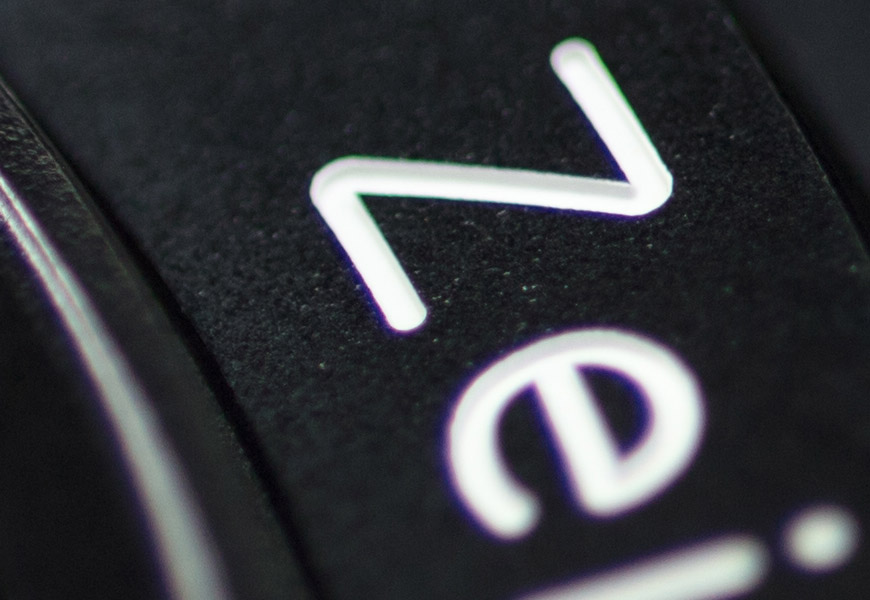
Crop 100%, visible chromatic aberration on the extreme f/stop (stop it down for better results).
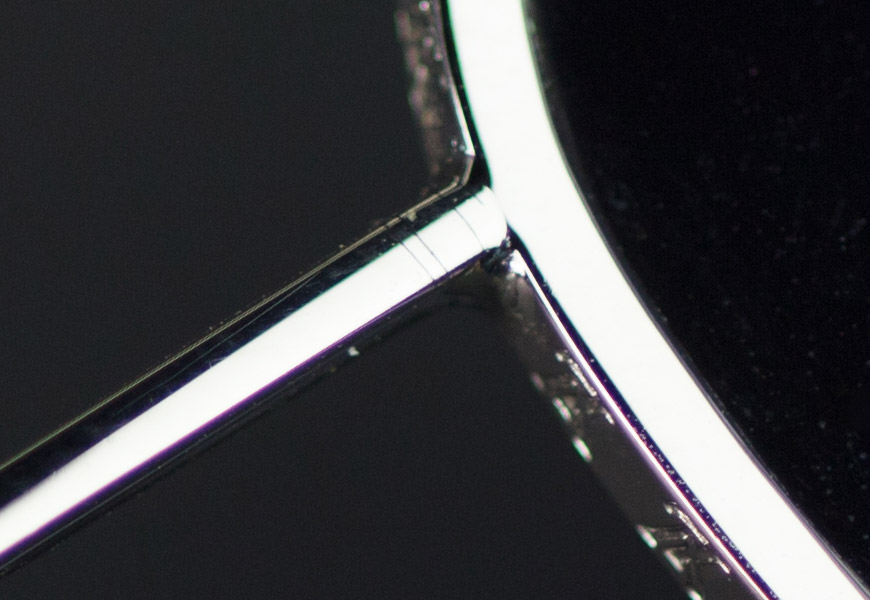
Crop 100%, minimal chromatic aberrations out of the image plane.
Other well controlled distortions are the geometry and internal reflections; both virtually perfect on any 100mm f/2.8. The geometry is actually hard to get wrong on a short-telephoto prime. We’ve seen many cheaper and perfect lenses, and only zoom formulas might showcase some geometric limitations nowadays. But the internal reflections are surprisingly good on this aging EF Macro USM: considering it doesn’t sport Canon’s recent high-performance treatments like the SWC (sub wavelength coating invented on the 2008 EF 24m f/1.4L II USM) or Air Sphere (introduced on the 100-400mm Mark II and being applied on every new high-end zoom), and may only the older-but-good SSC (super spectra coating from the 70’s), as seen on its yellowish glass and the bluish tones, it’s a peace of mind to work with many light sources aiming at your subject; or even the light being present in the frame. Once again these flower shots are a good example: the colored backgrounds are LCD screens allowing different gradient setups. But as the lens glass is treated, it doesn’t reflect the light nor the color data; also enhancing the overall contrast.

Crop 100%, high precision details and edges.
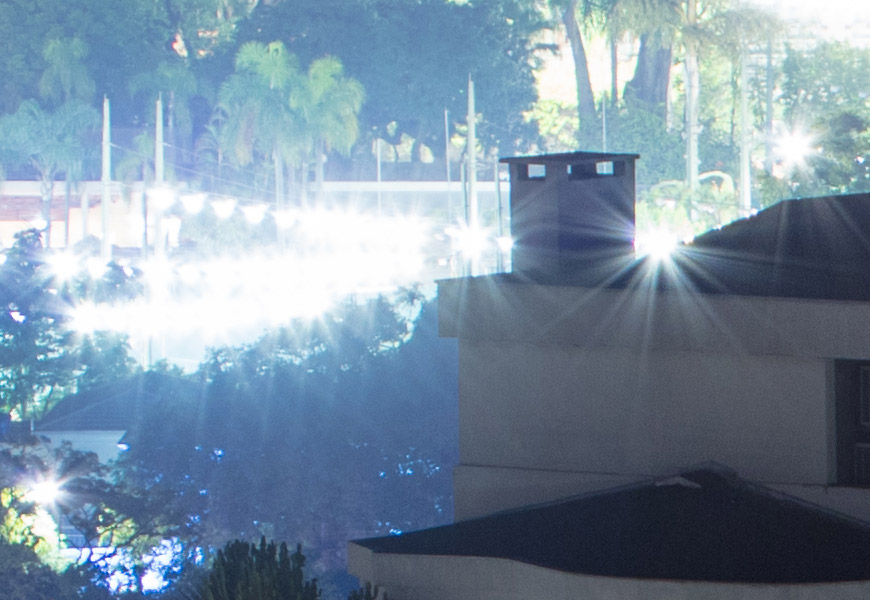
Crop 100%, internal reflection from the SSC coating.
Finally the colors and the out-of-focus qualities (bokeh) are also virtually perfect on the EF 100mm f/2.8 Macro USM. Straight from the camera its tones are neutral and easy to manipulate, with Canon’s tried-and-trusted color science. The reds are deep; the greens are darker but “real looking”, mixed with blues (not néon like Sony’s); and the yellows are vivid with a precise white balance setting. It’s a pleasure to shoot flowers, natural landscapes and portraits that, combined with a flash, the EOS 5DS doesn’t even require further color adjustments in post; they’re perfect. The out-of-focus background and foreground also look good despite the 8-blade rounded aperture appearing in the frame even at f/2.8; a physical limitation fixed on the more expensive L-series; but not a big issue on the older lens. Overall most frames look good, with almost a clinical quality given the contrast, details, resolution and pleasing optical qualities, 18-years on the market.

“Bokeh balls” at f/2.8 5s ISO100; despite the widest aperture we can see the aperture blades in the frame.
The EF 100mm f/2.8 Macro USM is a, as usual, very interesting lens from Canon’s lineup. There were almost two decades until this review. There are many “macro” lenses on the lineup (including an identical one). And sometimes both 100mm f/2.8 cost the same, creating an avalanche of question on my inbox: which one to choose? But the answer is very simple: if your looking for a better build with weather sealing; a built-in stabilizer; and a slight optical advantage, that’s the L-series. For everything else? The regular 100mm Macro impresses for its quality.
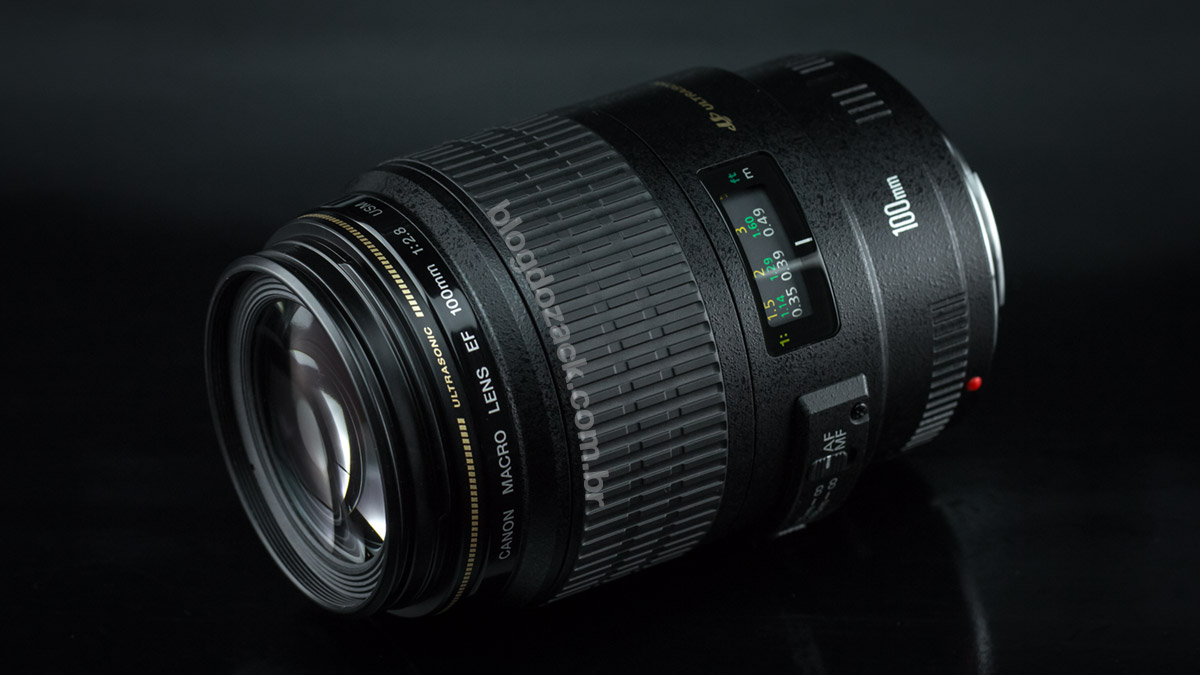
Its build is typical of Canon’s intermediary design school from the 90’s: a robust plastic body guarantees a light and easy to use lens in demand on both the professional and amateur markets. The usability also pleases for its ease of use with a perfect manual focusing ring, all-internal focusing and silent USM; things the more expensive and more recent Nikon Micro-Nikkor can’t deliver (it’s manual focus ring is bad). And the image quality, well, we’re talking about a 1) medium-telephoto 2) prime 3) macro; it’s virtually impossible to get it wrong; and it shows. So it’s true: don’t mess with a winning formula. Add it to your kit and nice shooting!